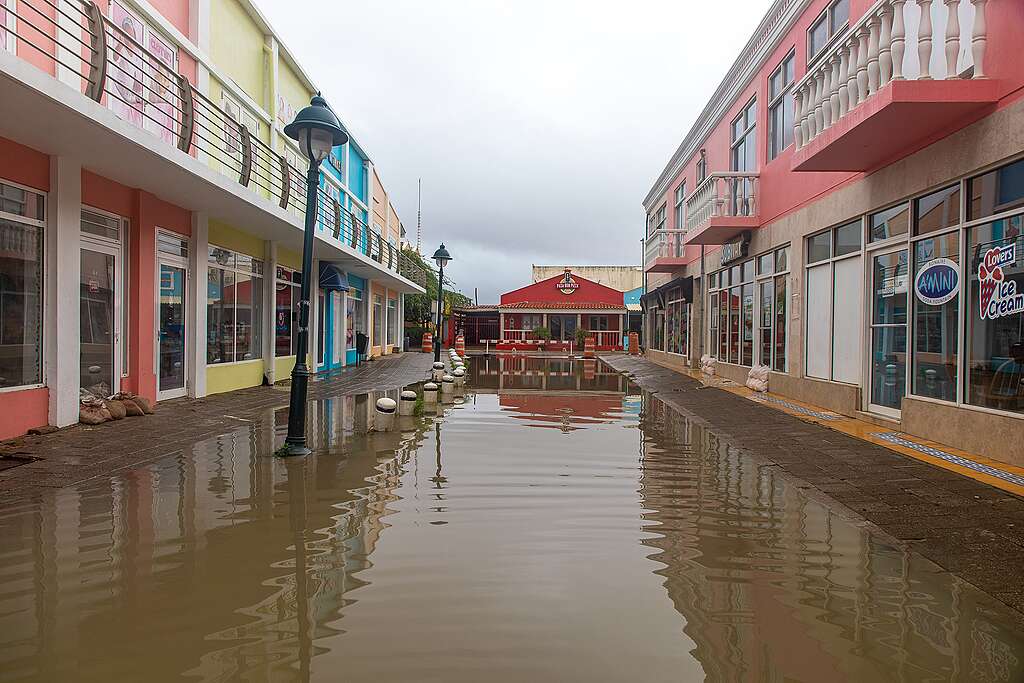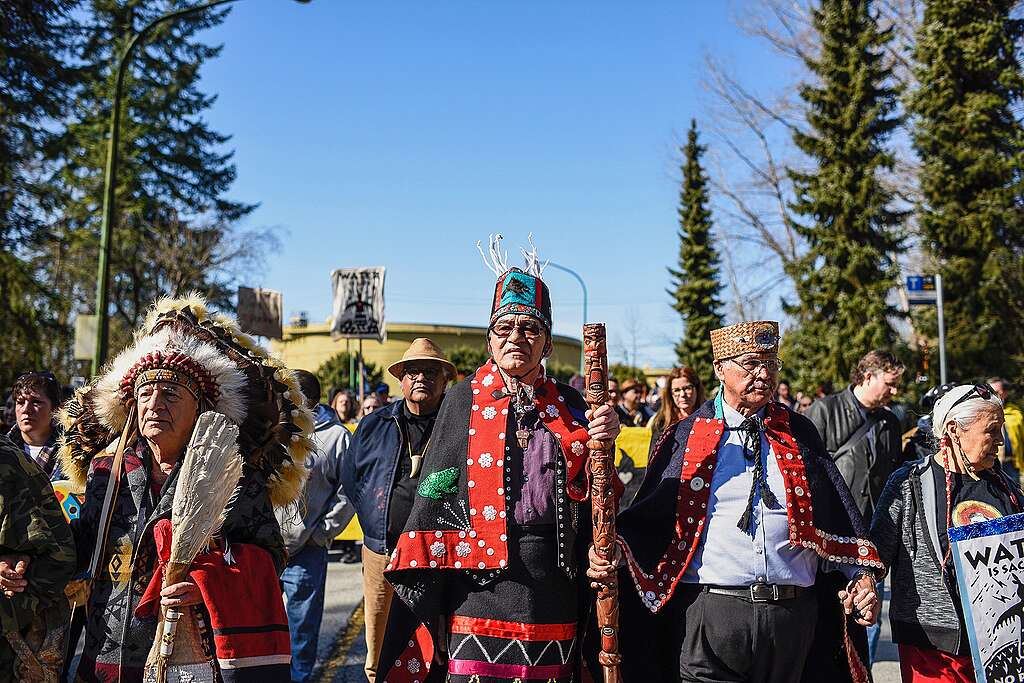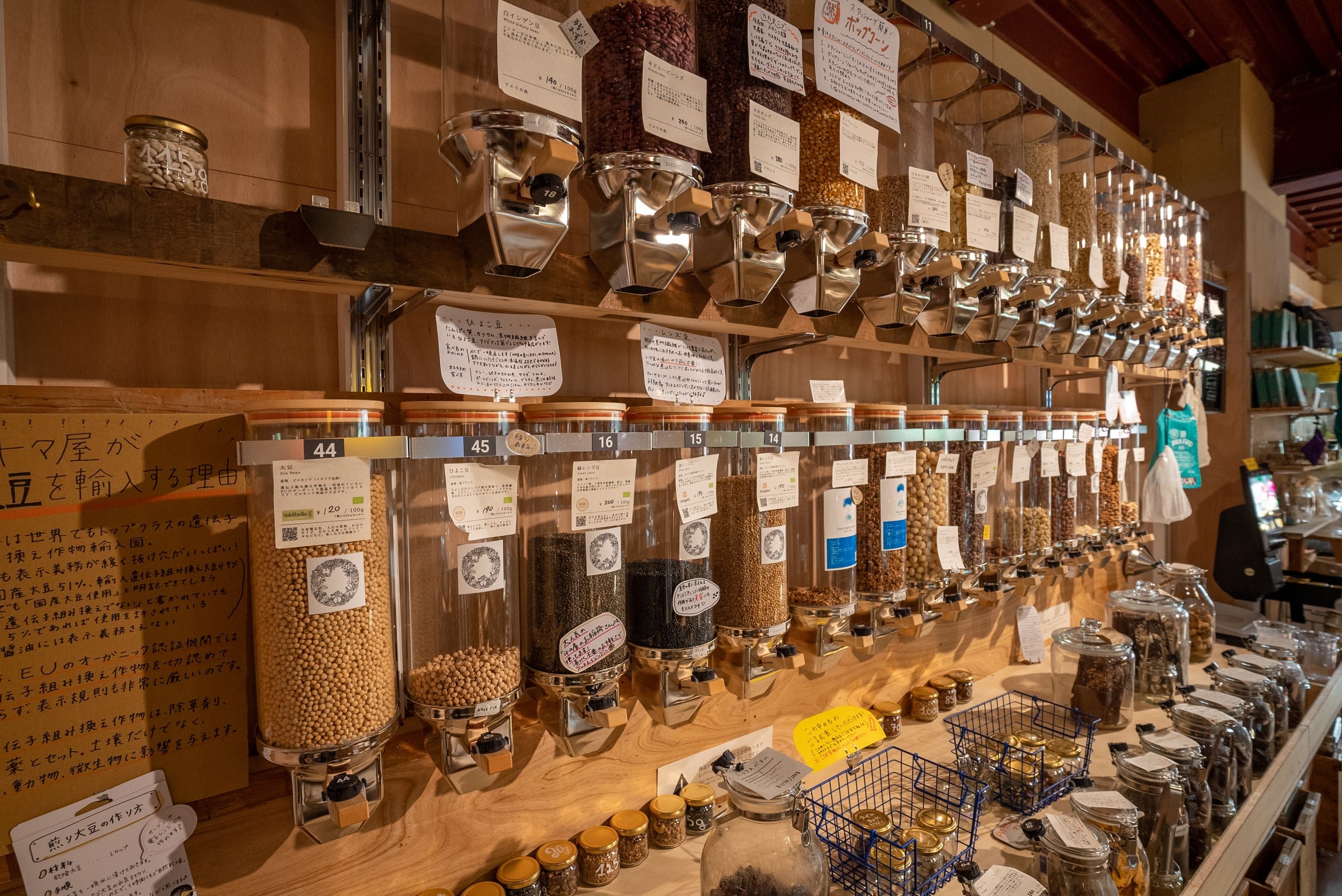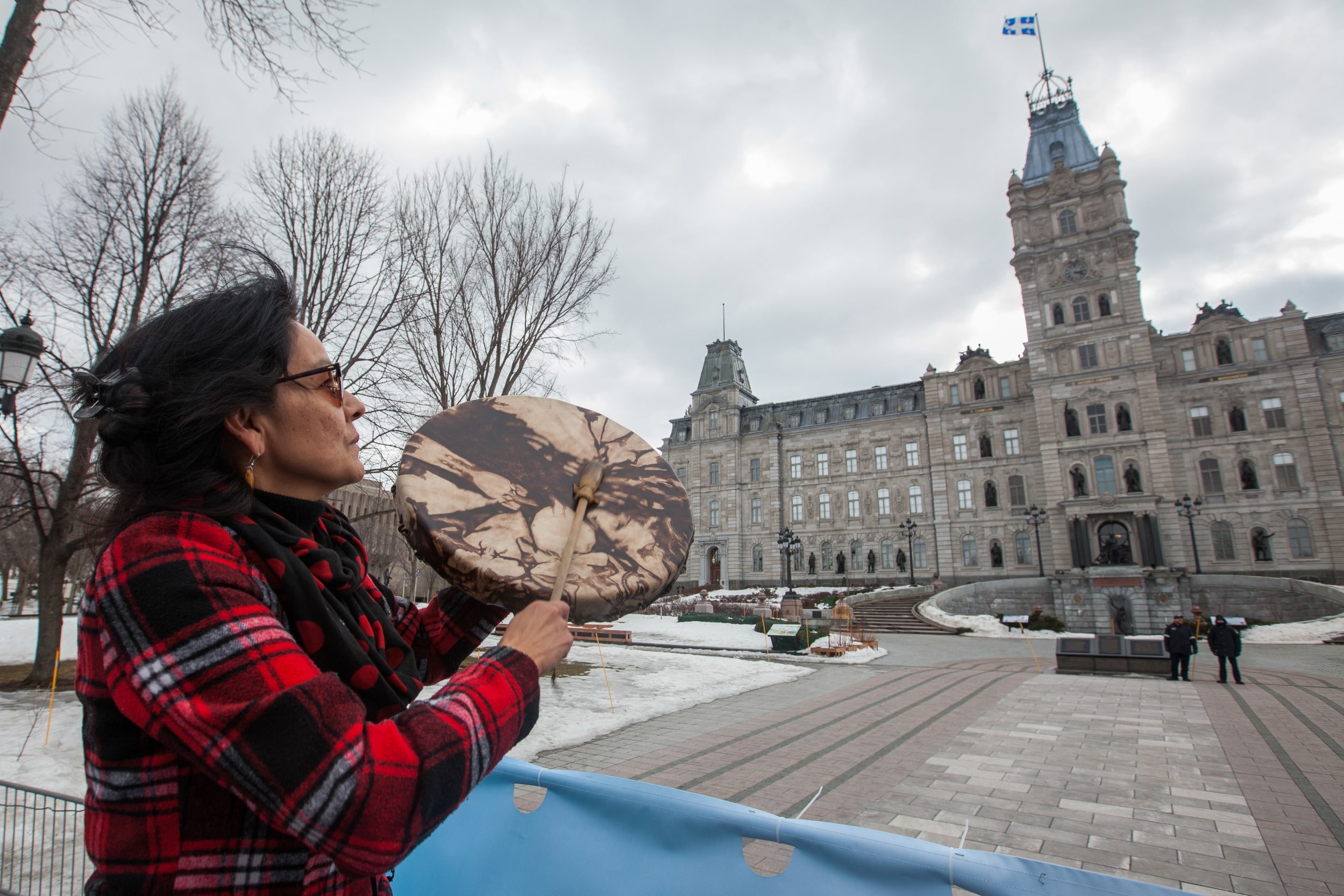What would you do if the place you call home was going to disappear under water? Or if someone wanted to build a fossil fuel pipeline through your neighbourhood? Or if you were finding it harder to get food?
These are the stories of just a few of the communities on the frontlines of climate change. And how they acted with strength and courage to meet its challenges.
Water rises around the island of Bonaire

Remember that first question? What would you do if the place you call home was going to disappear under water?
Well, the people on the Caribbean island of Bonaire decided to take their government to court. Eight islanders sued the government of the Netherlands in 2024. They said it was violating their human rights, including their right to life. Why? Because it wasn’t doing enough to protect them from climate change.
The rising seas caused by climate change could cover parts of their homeland forever if the world doesn’t cut its greenhouse gas pollution – the pollution causing climate change. One fifth of Bonaire could be lost to the sea by the end of this century.
The islanders are asking the court to order the government to cut its greenhouse gas pollution quickly. They’re also asking the government to help its territories prepare for the impacts of climate change, like rising seas and extreme weather.
It’s already harder to grow crops because of the warmer and drier weather.
The islanders want the government to work with them to protect Bonaire from the worst impacts of climate change. This will mean that they can continue to live there and pass on their traditions to their children.
They’re not alone. Communities across the globe, including Indigenous land defenders in Canada, are also acting to protect their future.
Wet’suwet’en resist the Coastal GasLink Pipeline
An energy company was ready to start building a pipeline in 2018. The pipeline would carry natural gas, a fossil fuel, from mines in northeastern British Columbia to Kitimat on the north coast.
But the company was missing one important thing. Wet’suwet’en hereditary chiefs hadn’t agreed to allow the pipeline to cross their territory.
Wet’suwet’en land defenders blocked the roads leading to construction sites. They also occupied these spaces to defend the land and waters in their territory.
The RCMP responded. It arrested protesters and took down blockades over the next few years. Protests, marches, blockades, and occupations in support of the Wet’suwet’en sprang up across the country.
Hereditary chief Na’Moks said the pipeline threatened “our water, our salmon, and our rights.” He said that it was the hereditary chiefs’ duty to protect the territory.
The pipeline did violate Indigenous rights. The United Nations Declaration on the Rights of Indigenous Peoples states that Indigenous Peoples have the right to refuse development on their lands. British Columbia made that declaration a law in 2019.
The Wet’suwet’en resistance slowed the construction of the pipeline. It wasn’t finished until 2024.
While the Wet’suwet’en fought to protect their land from harm, other communities are moving to sustainable energy to power the future.

The Arctic community taking energy from the sun
The Vuntut Gwitchin First Nation of Old Crow is the most northern community in the Yukon. The rising temperatures of climate change are causing a serious problem there. People are finding it harder to get food.
They wait longer to go ice fishing because the ice takes longer to freeze. They hunt fewer Porcupine caribou because the warmer weather is also making it harder for the caribou to find food. The caribou that do show up are coming later in the season.
Old Crow was one of the first Indigenous communities to declare a climate emergency in 2019. Until then, it had burned diesel fuel for all its energy, which created greenhouse gas pollution.
The community now owns the largest solar energy farm in the Yukon. It’s using sunlight to make a quarter of its energy! Owning the farm gives the community more control over decisions about its energy. And by creating less pollution, the community is helping to slow climate change and protect its future.
Want to read more stories about strong communities?
All these communities are showing that change is possible – by resisting harmful projects or building their own climate solutions. Together, their actions are shaping a future where people and the planet can thrive.
You can build support for communities on the frontlines of climate change by sharing their stories. Read Young people vs the climate crisis and What does climate justice look like?



